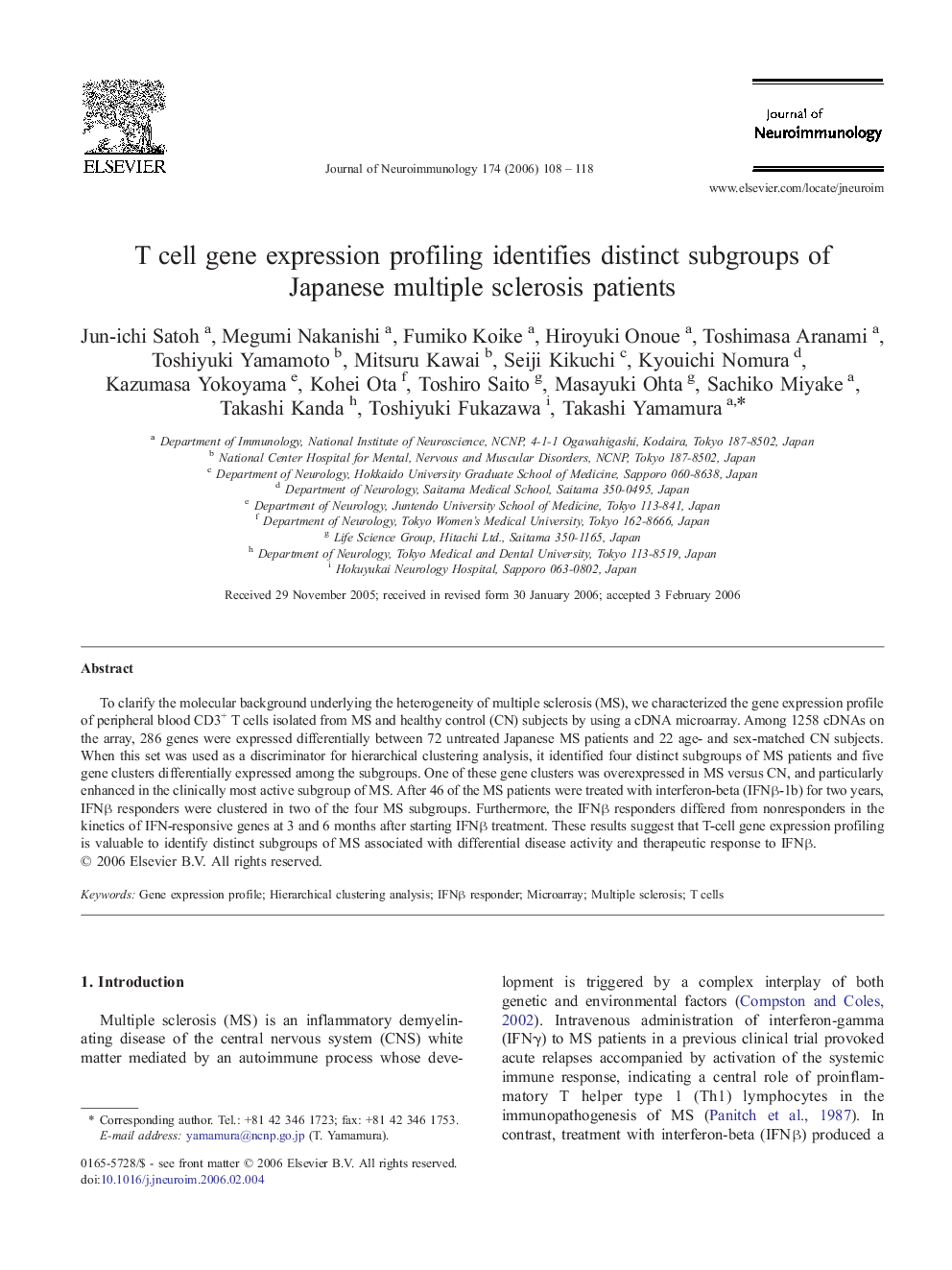| Article ID | Journal | Published Year | Pages | File Type |
|---|---|---|---|---|
| 3066009 | Journal of Neuroimmunology | 2006 | 11 Pages |
To clarify the molecular background underlying the heterogeneity of multiple sclerosis (MS), we characterized the gene expression profile of peripheral blood CD3+ T cells isolated from MS and healthy control (CN) subjects by using a cDNA microarray. Among 1258 cDNAs on the array, 286 genes were expressed differentially between 72 untreated Japanese MS patients and 22 age- and sex-matched CN subjects. When this set was used as a discriminator for hierarchical clustering analysis, it identified four distinct subgroups of MS patients and five gene clusters differentially expressed among the subgroups. One of these gene clusters was overexpressed in MS versus CN, and particularly enhanced in the clinically most active subgroup of MS. After 46 of the MS patients were treated with interferon-beta (IFNβ-1b) for two years, IFNβ responders were clustered in two of the four MS subgroups. Furthermore, the IFNβ responders differed from nonresponders in the kinetics of IFN-responsive genes at 3 and 6 months after starting IFNβ treatment. These results suggest that T-cell gene expression profiling is valuable to identify distinct subgroups of MS associated with differential disease activity and therapeutic response to IFNβ.
